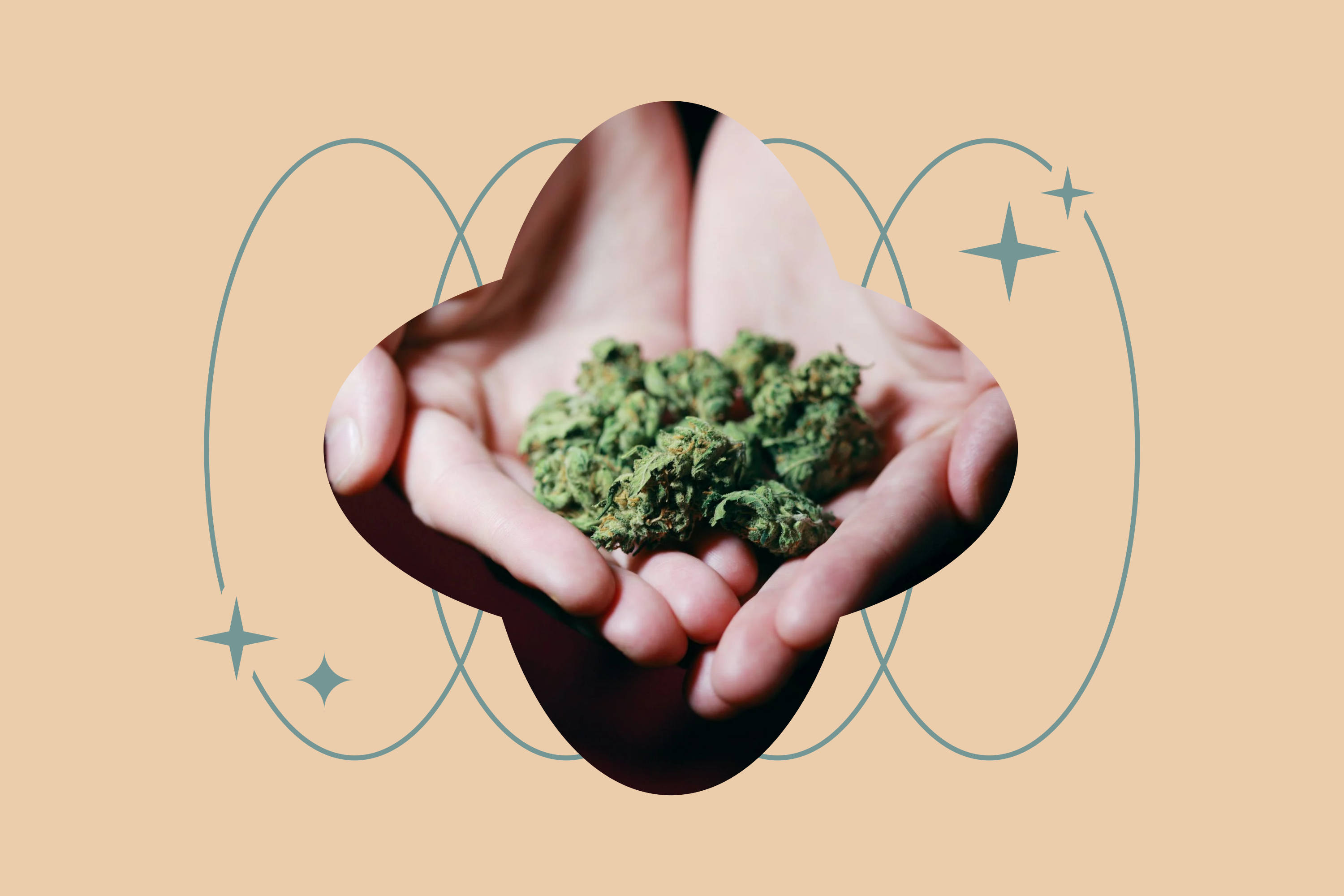7 Ovary Facts You Should Know, And Why They Matter
Your ovaries do a lot for you every day — but how much do you really know about them? Whether you are trying to conceive, trying to prevent pregnancy, or simply the proud owner of a pair of ovaries, it’s important to understand how your anatomy works to keep you healthy, happy, and fertile. Read on to discover seven ovary facts you probably didn’t know, and why they matter for your well-being.

Ovary Facts
1. Ovaries can change in size and volume over time.
You might think that your ovaries remain the same size your entire life, but that’s not true! The average ovary measures 3.5 cm x 2.5 cm x 1.5 cm in a woman of reproductive age. However, after menopause, the ovaries shrink due to the declining number of eggs and lower hormone levels. The average size of a postmenopausal ovary is 2 cm x 1.5 cm x 1 cm or smaller. In fact, sometimes, postmenopausal ovaries are so small that they cannot be seen on an ultrasound.
Ovaries also decrease in volume in addition to size. When we are born, our ovaries contain as many as two million immature eggs or follicles. By the time we have our first period, that number decreases to about 300,000. After starting your period, you lose about 1,000 eggs each menstrual cycle. By menopause, the entire ovarian reserve is depleted, leading to a significant change in volume.
2. Ovaries are responsible for hormone production.
The endocrine system is the group of organs responsible for producing hormones, the chemical messengers that serve various important functions in the body. Many hormones are produced in the pituitary gland (located in the brain), the thyroid glands, and the adrenal glands — but what you may not know is that the ovaries play an essential role in the endocrine system, too!
Estrogen and progesterone, the two most important female sex hormones, are produced in the ovaries. The ovaries secrete different levels of these hormones based on what is going on in your body. After ovulation, for example, progesterone levels rise, causing the thickening of the endometrium (a.k.a. the uterine lining). The endometrium thickens to prepare the body for pregnancy if an egg is fertilized. If pregnancy occurs, the ovaries make more estrogen to prevent additional eggs from being released, and more progesterone to prevent uterine contractions that may disrupt the pregnancy.
3. Only one egg is released during ovulation.
….usually, at least. During a normal cycle, many follicles grow during the follicular phase of the cycle, occurring prior to ovulation. However, just before ovulation, one follicle typically stands out as “dominant.” Most of the time, only the dominant follicle produces a mature egg, which is released during ovulation and travels down the fallopian tubes to become fertilized.
Less frequently, more than one egg may be released during ovulation. When two separate eggs are released, it’s possible that they are both fertilized by two separate sperm. This results in a multiple pregnancy with dizygotic, or fraternal, twins. More rarely, three or even four separate eggs can be fertilized, leading to fraternal triplets or quadruplets. Because they are fertilized separately, fraternal multiples don’t share identical DNA. As a result, they may be different genders and don’t always look alike.
Interestingly enough, twins, triplets, and quadruplets are still possible when only one egg is released during ovulation. Sometimes, the fertilized egg splits into multiple parts as it develops. These parts go on to develop into more than one fully-grown fetus, forming monozygotic, or identical, multiples. Identical twins, triplets, or quadruplets share the exact same DNA. As a result, they are always the same gender and look very much alike — hence the name “identical.”
4. The ovaries are not directly attached to the fallopian tubes.
Drawings of the ovaries often make it appear that they are stuck to the top of the fallopian tubes, but this isn’t actually an accurate representation of what your anatomy looks like. In reality, the ovaries are connected to the fallopian tubes by small, fingerlike projections called fimbriae. These fimbriae bridge the gap between the ovaries and the openings of the fallopian tubes.
It’s important to note that not all of the fimbriae are long enough to touch the fallopian tubes. On each side, the longest of the fimbriae is called the ovarian fimbria. Only the ovarian fimbria is actually long enough to connect the ovary to the fallopian tube. You could say, then, that the ovaries are hanging onto the fallopian tubes by a single thread!
5. Some women can feel ovulation happening in their ovaries.
Do you ever get a slight twinge on one side of your pelvis or abdomen during the middle of your menstrual cycle? You might be feeling your ovaries in action. Ovulation pain, or “mittelschmerz,” affects about 1 in 5 women. The name “mittelschmerz” is German for “middle pain,” which is doubly appropriate, given that it occurs both in the middle of your body and the middle of your cycle.
Most people do not get severe ovulation pain. It usually lasts less than 48 hours and goes away on its own without the use of medication. The pain may be sharp and sudden, or dull and achy. Many women say it feels similar to their menstrual cramps. You might notice that the pain occurs on the same side every month or that it switches sides. Most likely, your pain corresponds to the side that is releasing the egg that month.
6. Your ovaries are affected by stress.
Stress affects nearly every part of your body. It’s not surprising, then, that your ovaries are no exception. Many of the hormones that control ovulation, or the release of an egg from the ovaries each month, are produced in the pituitary gland. The pituitary gland is regulated by a part of the brain called the hypothalamus. When the function of the hypothalamus is disrupted, ovulation can be late or may not happen at all.
You may have had an occasion where you missed your period, yet had a negative pregnancy test. Looking back, it’s more than likely that this occasion happened during a period of high stress in your life. Whether you’re experiencing good stress (eustress) or bad stress (distress), everything from work to school, to moving, to getting married can affect the function of our hypothalamus, and therefore our ovaries. As a result, you may have an anovulatory cycle, resulting in a missed period and the inability to get pregnant that month.
The good news? Once your stress levels go down, your cycle should quickly return to normal! If it doesn’t, that may be a sign you need to visit your OB/GYN for a checkup.
7. Ovarian cysts are common.
Many women associate ovarian cysts with the condition polycystic ovarian syndrome (PCOS), without realizing that ovarian cysts are actually quite common! In fact, most women will develop at least one ovarian cyst in their lifetime. The majority of these cysts are not serious and will go away without treatment.
The most common type of ovarian cyst, occurring in most women, is called a functional or simple cyst. These cysts form from the follicles in your ovaries that grow eggs during the menstrual cycle. Usually, after a dominant follicle emerges, the other immature follicles dissolve. But when the follicle does not dissolve, the sac containing the immature egg can fill with fluid and become a simple cyst.
Simple cysts can be painful but are usually not serious. Cysts that are larger than 5 cm, however, may need surgical removal to avoid rupture or ovarian torsion.
Mira’s Editorial Process
All content produced by Mira meets stringent editorial standards, ensuring excellence and accuracy in language and medical precision. Every piece undergoes thorough fact-checking and review by qualified professionals. Check out our full editorial process to learn more.










